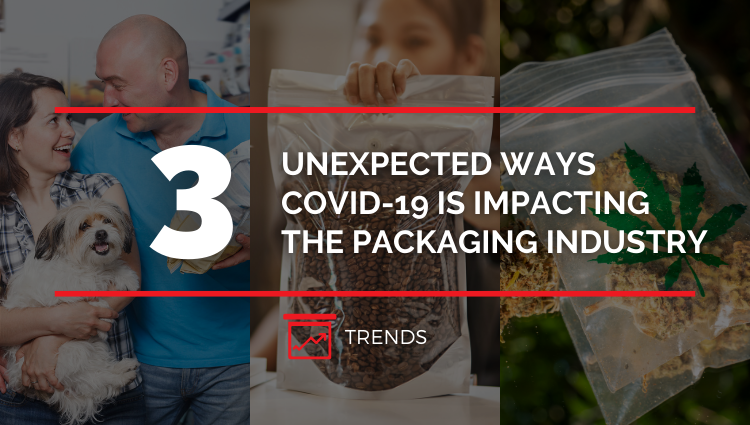Modified atmosphere packaging for fresh-cut fruits and vegetables

Today's consumers shopping the produce section of the grocery store have high demands of their fruits and vegetables. The items must be fresh and minimally processed, have an extended shelf-life, and look pretty to boot. One way that CPG companies can achieve all of the above for fresh-cut produce is by leveraging modified atmosphere packaging technologies.
Interested in MAP solutions but now sure where to start?

What is modified atmosphere packaging?
Modified atmosphere packaging (MAP) is a collection of packaging modifications that work to create or maintain an atmosphere inside of a package which controls and slows oxidation of fresh food. Oxidation of food results in spoilage, off-textures, offensive odors, and discoloration. Think lettuce turning brown or apples becoming gritty in texture. By preventing oxidation, the useful life of fresh products is greatly extended and their visual presentation is preserved.
Below are some examples of widely-used types of modified atmosphere packaging:
- Gas (nitrogen) flush. This component of a packaging system pumps harmless nitrogen gas into the package to displace oxygen right before sealing.
- One-way valves. Often used in the coffee industry, these plastic valves allow gases to escape the package without letting anything else in.
- Barrier packaging materials. These special packaging films provide decreased permeability to oxygen and/or moisture.
- Desiccant packs. Often found inside pill bottles, desiccant packs absorb ambient oxygen or moisture.
For an in-depth explanation of modified atmosphere packaging technologies, see our guide here.
Why is MAP so important for fresh-cut fruits and vegetables?
Fresh-cut fruits and vegetables have a high respiration rate, meaning they spoil and discolor quickly when exposed to oxygen. Because fresh produce is minimally processed and contains few (if any) preservatives, modified atmosphere packaging technologies must take on the role of 'preserver'.
For CPG companies, the extended shelf life created by modified atmosphere packaging means an enhanced product lifespan, wider geographic distribution of their product, and brand exposure to a larger audience. Bottom line: It increases their bottom line.
For consumers, modified atmosphere packaging enables them to maintain a healthy diet in a convenient manner. It's no longer necessary to stop at the grocery store for fresh produce multiple times per week. Now, consumers can stock up in greater quantities knowing that the product will remain fresher longer.
For society at large. extending the shelf life of fresh produce allows for wider access to healthy foods and increased food security. Food waste is also decreased when produce can remain viable for a longer period of time.
What is the history of MAP for fresh produce?
Modified atmosphere packaging for fresh-cut fruits and vegetables was developed in the early twentieth century and is widely used today. Here's a short history of the advancements in this field:
1930s: Ships transporting fruits maintained high concentrations of carbon dioxide in storage rooms to extend shelf-life of products.
1940s – 1950s: Fresh apples and pears were stored in a warehouse with high levels of carbon dioxide to slow respiration. They could be eaten as many as 6 months after harvest.
1950s – 1960s: Whirlpool Corporation developed methods to replace air inside bulk shipping containers of produce with different gases.
1990s: UK supermarkets Tesco and Asda began packaging fresh-cut fruits and vegetables in modified atmospheres. In North America, modified atmosphere packaging really began to take hold when McDonald’s began using MAP to extend shelf-life of their bulk lettuce and produce.
2000s: Rapid growth is seen in demand for fresh, natural produce with extended shelf-life, leading to increased adoption of MAP for fresh-cut produce.
2010s - today: Convenience, healthy lifestyles, and the demand for preservative-free food are major contributors to the continued growth of MAP for fresh-cut fruits and vegetables.
How is MAP used in packaging fresh-cut fruit and vegetables?
Modified atmosphere packaging maintains or decreases ambient oxygen within a package to levels that are conducive to extending shelf life. In general, oxygen levels of 1 - 5% are enough to delay oxidation of fresh produce. At concentrations below 8%, ripening and maturation can be delayed.
The below list describes the approximate storage life of different kinds of produce when using MAP technologies under optimal conditions:
- Apples: 2 - 11 months (1 - 2% oxygen levels)
- Bananas: 15 days (2 - 5% oxygen levels)
- Lettuce: 3 - 4 weeks (1 - 3% oxygen levels)
- Onions: 8 months (1 - 2% oxygen levels)
To achieve these low oxygen levels, nitrogen gash flush is often utilized for packaging fresh-cut fruits and vegetables. A nitrogen generator is integrated with a packaging machine and pumps nitrogen gas into each package after filling and right before sealing.
Many produce companies are also seeing the added value of investing in high barrier packaging materials that feature low oxygen transfer rates (OTR). These films have low oxygen permeability which provides a higher level of protection against oxidation.
Want to package your fresh produce using MAP?
First, let's nail down all the details. Get started with our free comprehensive Packaging Equipment Project Planner:

Sources
History of Modified Atmosphere Packaging
MICROBIOLOGICAL SAFETY OF CONTROLLED AND MODIFIED ATMOSPHERE PACKAGING OF FRESH-CUT PRODUCE




